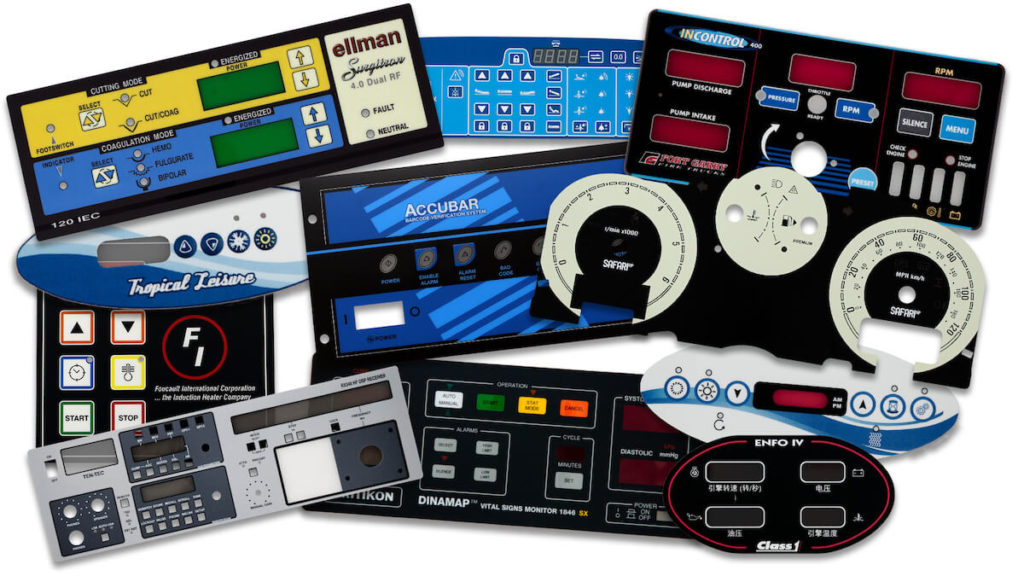How Anti-Glare and Scratch-Resistant Graphic Overlays Enhance Durability
How Anti-Glare and Scratch-Resistant Graphic Overlays Enhance Durability
Blog Article
Recognizing Exactly How Graphic Overlays Work to Improve Your Creative Projects
Graphic overlays offer as a critical part in the world of creative jobs, improving both aesthetic interaction and audience involvement. The successful combination of these overlays requires mindful consideration of style principles and goals.
What Are Graphic Overlays?
Graphic overlays are visual aspects that are put on top of a base image or interface to improve communication and individual experience. They offer numerous functions, including supplying added info, assisting individual interaction, and improving aesthetic appeal. Usual applications of visuals overlays can be located in electronic interfaces, marketing, and academic products.

Graphic overlays are typically created using style software program, permitting designers to adjust color, transparency, and dimension to attain the preferred effect. They can be fixed or dynamic, with computer animations that draw the audience's eye and improve engagement. The calculated usage of visuals overlays not just boosts aesthetic hierarchy yet also aids in providing a systematic and clear message. Because of this, comprehending just how to effectively carry out graphic overlays is vital for developers aiming to boost their innovative projects.

Benefits of Utilizing Graphic Overlays
Using graphic overlays can substantially improve the performance of aesthetic communication throughout various tools. One of the primary benefits is the ability to share intricate details succinctly. By layering graphics, text, and pictures, overlays promote the discussion of information in a much more absorbable layout, making it much easier for target markets to realize vital concepts swiftly.
Moreover, graphic overlays can enhance visual allure, attracting focus to particular components within a layout. This is specifically helpful in marketing and advertising, where capturing the audience's interest is extremely important. The calculated use of colors, forms, and typography in overlays can develop a cohesive and engaging aesthetic narrative, enhancing brand name acknowledgment.
Furthermore, graphic overlays supply adaptability in layout. They allow designers to adjust content for various systems without going back to square one, ensuring uniformity throughout numerous networks. This versatility is essential in today's electronic landscape, where material should be enhanced for varied devices and styles.
Sorts Of Graphic Overlays
When considering the different types of graphic overlays, it is necessary to recognize their diverse applications across different markets. Graphic overlays can be categorized mostly right into three types: useful, ornamental, and educational.
Useful overlays are created to improve the usability of an item. Generally located in electronic tools, these overlays frequently offer tactile responses with raised buttons or distinctive surfaces, boosting individual interaction. They can additionally work as a safety layer, protecting the underlying parts from deterioration.
Ornamental overlays concentrate on visual improvement, enabling brands to reveal their identity via lively styles and customized graphics. These overlays are prevalent in product packaging, advertising and marketing, and point-of-sale materials, where aesthetic charm is crucial for drawing in customers.
Informative overlays, on the other hand, are utilized to convey crucial data or directions. They can be seen in applications such as signs, user handbooks, and instructional graphics, where clearness and readability are paramount.
Each kind of visuals overlay serves an unique function, adding to the overall performance of innovative tasks while dealing with details needs within different sectors. Comprehending these distinctions is crucial for picking the best overlay for your job.
Ideal Practices for Application
To guarantee the successful application of visuals overlays, it is essential to establish a clear understanding of my response the project's objectives and the particular requirements of the end-users. Begin by carrying out complete study to recognize the target market and their preferences, as this will inform style choices and performance.
Next, produce a comprehensive strategy that details the overlay's integration, layout, and purpose process. This strategy needs to include interface factors to consider, making certain that overlays boost as opposed to block the individual experience - Graphic Overlays. Consider the visual hierarchy and maintain consistency in style components, such as shade typefaces, icons, and plans, to advertise brand coherence
Testing is important; gather responses from a depictive sample of customers to determine prospective issues and locations for improvement. Iterate on the style based on individual input and performance data. Additionally, make certain compatibility throughout various tools and systems to make the most of ease of access.
Devices for Producing Overlays
Creating reliable graphic overlays calls for the right devices to translate design concepts into functional applications. Various software application and platforms are offered, each customized to specific requirements and ability levels.
Adobe Photoshop and Illustrator are market criteria, providing considerable capabilities for developing and controling overlays. These devices offer innovative functions such as layer management, blending modes, and vector graphics, allowing developers to produce high-grade and detailed overlays.
For those seeking a more user-friendly technique, Canva and Figma are excellent options (Graphic Overlays). Canva's Learn More intuitive user interface allows users to develop overlays quickly making use of pre-designed layouts, while Figma assists in joint style in real-time, making it excellent for groups
In addition, open-source options like GIMP and Inkscape supply durable capabilities without the associated prices of proprietary software. These tools enable versatility in design and can accommodate numerous documents styles, guaranteeing compatibility across different platforms.

Conclusion
In verdict, visuals overlays offer as effective devices for boosting imaginative projects by offering aesthetic clarity, visual charm, and brand name uniformity. By recognizing the fundamental concepts and benefits associated with visuals overlays, designers can significantly improve the top quality and effectiveness of their aesthetic interactions.
Graphic overlays offer as an essential part in the world of innovative projects, boosting both visual interaction and audience involvement.Graphic overlays are frequently created utilizing design next software, enabling designers to adjust shade, openness, and dimension to accomplish the wanted effect.Furthermore, graphic overlays can increase visual allure, attracting attention to specific aspects within a layout.Additionally, visuals overlays supply versatility in layout.In verdict, visuals overlays serve as effective tools for enhancing imaginative projects by giving aesthetic quality, aesthetic charm, and brand name uniformity.
Report this page